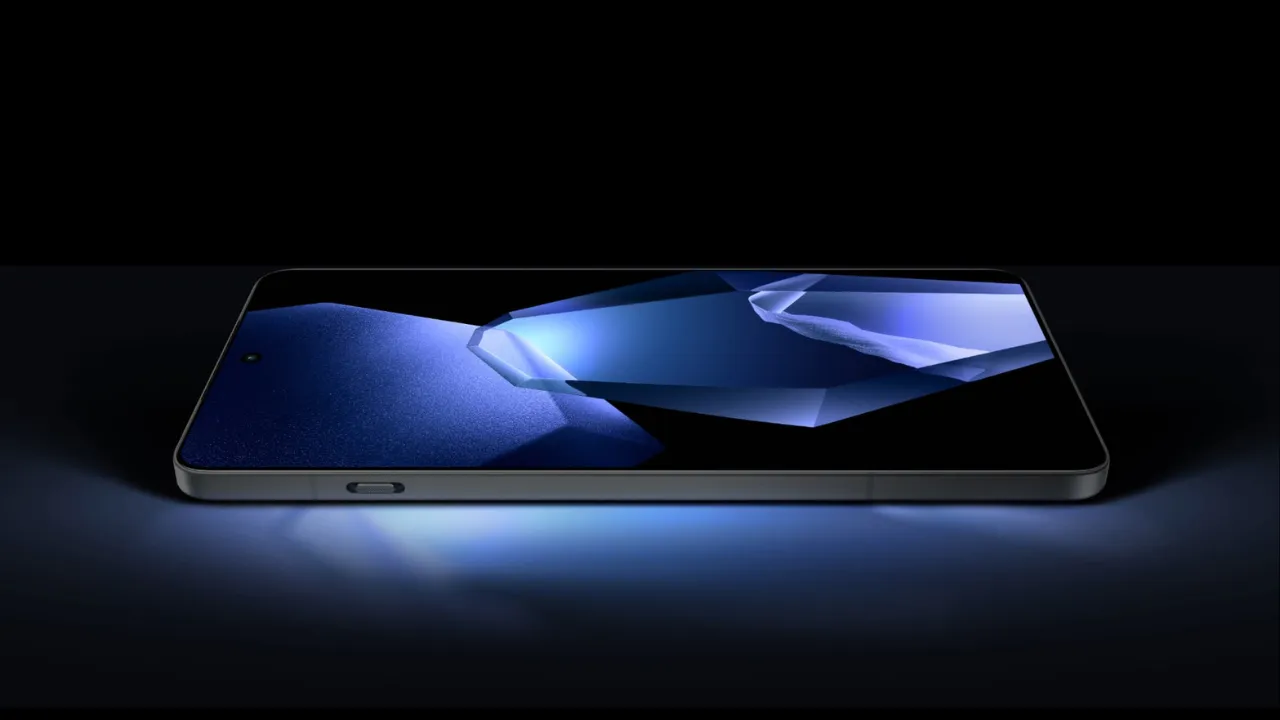1. Introduction
Why Most People Make Mistakes When Buying a Fridge and How This Guide Helps
Buying a refrigerator might sound like a simple task, but in reality, it’s one of the most common appliances people choose incorrectly. Whether it’s selecting the wrong size, ignoring power consumption, or getting tempted by flashy features that don’t matter, many users end up with a fridge that doesn’t fit their lifestyle.
One of the most frequent mistakes people make is buying a fridge just because it’s on discount or looks stylish. They forget to check if it matches their kitchen space, if the freezer size is sufficient, or if it can handle the food needs of the family. Some buy large double-door refrigerators for small families, while others go for single-door models that fall short during summer months.
Another major issue is the lack of understanding about energy efficiency and new technologies. Terms like “inverter compressor”, “convertible freezer”, or “frost free” can be confusing. Many buyers skip comparing energy ratings and regret it later when the electricity bill arrives.
That’s why we’ve created this Refrigerator Buying Guide — to simplify the entire process for you. Whether you’re buying a fridge for the first time or replacing an old one, this guide will help you make the right decision based on your actual needs, not just marketing hype.
By the end, you’ll know exactly what to look for, which type suits your family, and how to balance features with price. So before you buy, read this guide carefully and avoid the most common mistakes most buyers make.
2. Things to Know Before Buying a Refrigerator in 2025
Buying a refrigerator in 2025 is no longer just about getting something to keep your food cold. With so many new features, technologies, and types available in the market, it’s easy to get confused and end up with a model that doesn’t truly meet your needs. That’s why understanding your personal requirements is the first and most important step in making a smart choice.
Below are the four key factors you must consider before investing in a refrigerator this year.
1. Family Size & Usage Needs
Your household size plays a major role in choosing the right fridge. A refrigerator that’s ideal for a bachelor or couple may be completely insufficient for a family of four or more. Overestimating or underestimating capacity can lead to frustration — either you’ll constantly run out of space, or you’ll end up paying extra for unused features and higher electricity bills.
Here’s a basic guideline:
| Family Size | Recommended Capacity |
|---|---|
| 1 person | 150 – 200 litres |
| 2–3 people | 200 – 300 litres |
| 4–5 people | 300 – 400 litres |
| 6+ people | 400 litres and above |
Tips:
- Families that store a lot of fresh vegetables or leftovers may need larger freezer-to-fridge ratios.
- If you cook often, go for deeper storage bins and wide shelves.
- Large families should consider double-door or side-by-side models.
Also, think about usage habits. Do you meal-prep in advance? Store dairy and meat separately? Need more freezer space for ice creams or frozen snacks? Your fridge should match your kitchen lifestyle, not just your headcount.
2. Kitchen Space & Placement
This is one of the most ignored yet most crucial factors in fridge buying. A high-tech, stylish fridge becomes a problem if it doesn’t fit in your kitchen or if the door doesn’t open fully due to wall space.
Here’s what you need to check:
Measure Accurately
- Width, height, and depth — all three dimensions matter.
- Leave at least 2–3 inches on the sides and back for ventilation.
- Ensure the fridge won’t block walkways or other cabinet doors.
Check Door Clearance
- Double door and side-by-side models need wider opening clearance.
- Make sure nothing obstructs the door swing, especially in small kitchens.
Power Outlet Placement
- Ideally, your fridge should be near a stable power outlet.
- Avoid using extension boards or old sockets for safety reasons.
Stabilizer Space
Although most modern refrigerators have inbuilt voltage protection, if your area has frequent voltage fluctuations, leave space for an external stabilizer as well.
Pro Tip: Use masking tape or newspaper to mark the fridge’s footprint on your kitchen floor to visualize space coverage before buying.
3. Power Consumption & Energy Efficiency
In 2025, energy bills are higher than ever. That’s why energy efficiency is no longer a luxury—it’s a necessity.
Every refrigerator sold in India has a BEE Star Rating (1 to 5 stars) that tells you how energy efficient the model is. A higher star rating = lower electricity bill, but also a slightly higher initial cost.
Star Ratings & Approximate Annual Units Consumed
| Star Rating | Annual Energy Use (200–300L Fridge) | Annual Cost (Approx.) |
|---|---|---|
| 2 Star | 350–400 kWh | ₹2,500 – ₹3,000 |
| 3 Star | 200–300 kWh | ₹1,500 – ₹2,000 |
| 5 Star | 150–200 kWh | ₹1,000 – ₹1,400 |
Inverter Technology
Refrigerators with inverter compressors adjust their speed based on cooling needs instead of turning off and on. This leads to:
- 30–40% less electricity usage
- Quieter operation
- Longer compressor life
Frost Free vs Direct Cool
- Frost Free: No ice build-up, even cooling, more energy used
- Direct Cool: Manual defrost, consumes less electricity but uneven cooling
Convertible Technology
Some newer models let you convert your freezer into fridge space as per usage — perfect for flexible energy management.
So while choosing a refrigerator, always think long-term. Spending ₹2,000 extra on a 5-star fridge can save ₹10,000 in power bills over 5–6 years. That’s why this Refrigerator Buying Guide strongly recommends prioritizing energy rating over short-term savings.
4. Budget and Long-Term Value
When we say budget, we don’t just mean the price tag. A smart buyer considers the lifetime cost of a refrigerator — which includes purchase cost, electricity usage, maintenance, and durability.
Decide Your Budget Range
Here’s what you can expect at different price points:
| Budget Range | Features to Expect |
|---|---|
| ₹10,000–₹15,000 | Single door, Direct Cool, 2–3 star rating |
| ₹15,000–₹25,000 | Double door, Frost Free, inverter compressor |
| ₹25,000–₹40,000 | Large capacity, convertible, 3–5 star, premium UI |
| ₹40,000+ | Side-by-side, French door, smart features, Wi-Fi |
After-Sales Service & Warranty
Don’t ignore service network, especially if you live in a non-metro city. Brands like LG, Samsung, Whirlpool offer wider service coverage.
Minimum warranty recommended:
- 1 year on product
- 10 years on compressor
Spare Parts & Repairability
Look for brands that offer easy-to-find spare parts and fast technician response. This is where long-term value really matters.
Check Online Reviews and Real-Use Feedback
A model with high features but poor reviews on cooling or durability is not worth the price. Don’t fall for marketing—always check genuine user experiences on platforms like Amazon, Flipkart, or tech forums.
Remember: A well-researched decision ensures peace of mind for the next 8–10 years. That’s the true essence of this Refrigerator Buying Guide — helping you spend smart today, and save more tomorrow.
Final Thoughts
Before buying a refrigerator in 2025, don’t rush. Take time to evaluate your real needs — family size, kitchen space, energy consumption, and budget. A fridge is not just an appliance; it’s a long-term investment that should make your daily life easier and more efficient.
When you focus on these 4 essential areas, your chances of making the right choice go up significantly. The goal of this Refrigerator Buying Guide is exactly that — to help you avoid common mistakes and buy a fridge that you won’t regret later.
3. Types of Refrigerators Explained
Choosing the right type of refrigerator is one of the most critical steps in any Refrigerator Buying Guide. There are various models in the market, each designed for a different kind of user and family need. Whether you’re a bachelor living alone, a family of five, or someone who loves premium kitchen appliances — the right refrigerator can make your life easier, save energy, and enhance your kitchen’s look.
Let’s explore the 6 major types of refrigerators available in India in 2025, and find out which one suits you best.
1. Single Door Refrigerator
Best for: Singles, couples, small kitchens
Capacity Range: 150L – 250L
Price Range: ₹10,000 – ₹18,000
Cooling Type: Direct Cool (manual defrost)
Energy Efficiency: Generally 3 to 5 stars
Compressor: Normal or inverter
Single door refrigerators are compact, affordable, and perfect for basic usage. They usually come with a freezer box inside the main compartment and a small vegetable tray below. Most models use Direct Cool technology, which requires manual defrosting once in a while.
Pros:
- Very affordable
- Takes less space
- Energy-efficient (in newer models)
- Ideal for small families or bachelors
Cons:
- Manual defrosting required
- Smaller freezer section
- Limited shelf space
A Refrigerator Buying Guide would recommend a single door fridge for those with limited space or budget, or for people who rarely store frozen items.
2. Double Door Refrigerator
Best for: Families of 3–5 members
Capacity Range: 250L – 400L
Price Range: ₹18,000 – ₹35,000
Cooling Type: Frost Free
Compressor: Mostly Inverter
Double door refrigerators are one of the most popular types in India. They come with two separate doors — one for the freezer (on top) and one for the fridge section (below). Most models use frost-free cooling, which means no manual defrosting needed.
Pros:
- No ice build-up
- Better cooling distribution
- Larger freezer space
- Suitable for families
Cons:
- Takes more electricity than single door (unless inverter-based)
- Needs more kitchen space
- Higher cost of repair in case of frost-free malfunction
If you’re looking for a balance of space, features, and efficiency, double door is the most commonly recommended choice in any Refrigerator Buying Guide.
3. Triple Door Refrigerator
Best for: Families of 4–6 who love organized storage
Capacity Range: 300L – 450L
Price Range: ₹25,000 – ₹45,000
Cooling Type: Frost Free
Compressor: Inverter or Linear Compressor
Triple door refrigerators come with three separate compartments — top for freezer, middle for fridge, and bottom for the vegetable/fruit zone. This separation helps reduce odor mixing and gives better temperature control in each zone.
Pros:
- Better space organization
- Bottom drawer is ergonomically useful
- Reduces temperature fluctuation
- Stylish design
Cons:
- Slightly expensive
- Less common in stores
- Smaller fridge compartment compared to double-door
For users who prioritize neatness and segregation of food items, triple door models are a premium yet practical pick. Many modern Refrigerator Buying Guides now include this as an emerging recommendation for urban homes.
4. Side-by-Side Refrigerator
Best for: Large families or premium kitchens
Capacity Range: 500L – 700L+
Price Range: ₹45,000 – ₹1,20,000
Cooling Type: Frost Free, Multi Air Flow
Compressor: Digital Inverter / Dual Fan Cooling
Side-by-side refrigerators come with vertical doors — one for the fridge and one for the freezer, placed next to each other. Some models also have water dispensers and smart features like Wi-Fi connectivity or touch panels.
Pros:
- Huge storage space
- Modern and luxurious design
- Often includes features like ice & water dispenser
- Excellent for bulk storage and joint families
Cons:
- High power consumption
- Requires large kitchen space
- Expensive
According to any premium Refrigerator Buying Guide, side-by-side refrigerators are ideal for large households or people who love to stock everything in bulk — groceries, beverages, frozen food, etc.
5. French Door Refrigerator
Best for: Ultra-premium kitchens, modern homes
Capacity Range: 500L – 800L
Price Range: ₹80,000 – ₹1.5 Lakh+
Cooling Type: Frost Free, Twin Cooling Plus
Compressor: Digital Inverter / Smart Linear
French door refrigerators combine the best of both worlds — two doors on the top for fridge (like side-by-side) and a large pull-out freezer drawer at the bottom. Some models also have quad doors or extra compartments for beverages and snacks.
Pros:
- Luxury design
- More fridge space, less freezer usage
- Great for party hosts or large meal preppers
- Latest tech: Wi-Fi, Smart diagnosis, etc.
Cons:
- Extremely costly
- Consumes more power
- Needs spacious kitchen
If your Refrigerator Buying Guide is focused on luxury, tech, and looks — French door refrigerators are the most premium option available in 2025.
6. Mini Fridge
Best for: Hostels, offices, bedrooms, backup use
Capacity Range: 45L – 95L
Price Range: ₹5,000 – ₹12,000
Cooling Type: Direct Cool
Compressor: Normal
Mini fridges are small-sized, single-door models that fit under tables or on countertops. They’re commonly used in hotel rooms, offices, or bedrooms for storing drinks, medicines, or limited food items.
Pros:
- Compact and lightweight
- Affordable
- Low electricity consumption
- Portable
Cons:
- Very small capacity
- No freezer or poor freezing performance
- Not suitable for full-time family use
If you’re setting up a small personal space or a backup for beverages, a mini fridge might be just what you need. While most Refrigerator Buying Guides don’t consider them for families, they’re highly useful for specific needs.
Summary Table – Types of Refrigerators
| Type | Best For | Capacity | Key Feature | Price Range |
|---|---|---|---|---|
| Single Door | 1–2 people | 150–250L | Budget-friendly | ₹10k – ₹18k |
| Double Door | 3–5 family members | 250–400L | Frost free, inverter | ₹18k – ₹35k |
| Triple Door | 4–6 users | 300–450L | Organized compartments | ₹25k – ₹45k |
| Side-by-Side | Large families | 500–700L | Massive freezer + fridge | ₹45k – ₹1.2L |
| French Door | Modern/premium homes | 500–800L | Smart tech & elegant design | ₹80k – ₹1.5L+ |
| Mini Fridge | Hostel/Office use | 45–95L | Portable, affordable | ₹5k – ₹12k |
Which Type Should You Choose?
Choosing the right fridge is all about lifestyle, space, and budget. Here are some quick picks:
- Best for budget users: Single Door
- Best value for families: Double Door
- Best for organizing: Triple Door
- Best for bulk storage: Side-by-Side
- Best for modern homes: French Door
- Best for personal use: Mini Fridge
Every Refrigerator Buying Guide should emphasize the importance of evaluating your kitchen layout, cooking habits, and energy goals before making a choice.
Final Thoughts
Each refrigerator type serves a different need. What’s best for one home may not work for another. That’s why this detailed Refrigerator Buying Guide breaks down the types in simple language, helping you match your requirements with the right model.
With so many choices available in 2025, making an informed decision is more important than ever. Don’t just go by looks or ads — understand what each type offers and how it fits your daily life.
When in doubt, revisit this Refrigerator Buying Guide, compare options side-by-side, and choose what delivers true value over the years.
4. Inverter Refrigerator vs Normal Refrigerator
In today’s world of rising electricity costs and smarter appliances, understanding the difference between an Inverter Refrigerator and a Normal Refrigerator is essential. Most buyers focus only on price or appearance, but overlook how the refrigerator works internally — especially the compressor.
This section of our Refrigerator Buying Guide breaks down all the major differences in terms of power consumption, compressor technology, durability, noise, and practical recommendations — so you can make an informed decision that saves money and frustration in the long run.
1. Power Savings – Which One Saves More Electricity?
One of the biggest differences between inverter and normal refrigerators is how they consume power.
Normal Refrigerator:
- Uses a fixed-speed compressor.
- Compressor switches ON and OFF completely depending on the temperature inside.
- This continuous start-stop cycle consumes more power.
- Higher electricity bills over time, especially in hot regions or with frequent door opening.
Inverter Refrigerator:
- Uses a variable-speed compressor.
- Adjusts compressor speed based on cooling demand.
- Maintains a more stable temperature and consumes 30–50% less electricity compared to non-inverter models.
- Ideal for homes with fluctuating usage or longer power outages.
Conclusion:
If electricity savings are important to you — an inverter refrigerator is the smarter long-term investment. Over 5–8 years, you can save thousands of rupees on power bills.
2. Compressor Technology – How Do They Work?
Understanding compressor technology helps you know why inverter models are more efficient.
Normal Refrigerator Compressors:
- Operate at a single speed — either full power or off.
- The temperature inside the fridge fluctuates more due to sudden stops and starts.
- Older and less precise technology.
Inverter Refrigerator Compressors:
- Operate at variable speeds depending on the cooling requirement.
- Maintain consistent internal temperature with smooth and quiet operation.
- Use advanced sensors and logic control to optimize performance.
For example, if you open your fridge frequently, an inverter compressor will gently ramp up to restore cooling, instead of overworking itself like in normal models.
Technical Edge:
- Inverter refrigerators often use BLDC (Brushless DC) motors, which are more efficient and reliable.
- Some premium brands (LG, Samsung) offer Smart Inverter Compressors with AI-based temperature control.
3. Durability & Noise Levels – Which One Lasts Longer?
Noise:
- Normal refrigerators produce more noise due to frequent compressor ON/OFF cycling.
- Inverter models run much quieter as the compressor doesn’t shut off entirely — it slows down instead.
This is a huge advantage in modern open kitchens or if your fridge is near your living or sleeping area.
Durability:
- The continuous stop-start stress on a normal compressor reduces its lifespan.
- Inverter compressors operate steadily and face less wear and tear, making them last longer.
- Most inverter models come with 10-year warranties on the compressor, which shows the brand’s confidence in durability.
Also, fewer start/stop cycles mean lower chances of electrical surges, making inverter refrigerators safer for areas with unstable electricity.
4. Which One Should You Buy?
Now the big question — inverter refrigerator or normal refrigerator, which is right for you?
Let’s break it down:
| Criteria | Inverter Refrigerator | Normal Refrigerator |
|---|---|---|
| Electricity Consumption | 30–50% less | Higher |
| Compressor | Variable speed | Fixed speed |
| Temperature Control | Precise & consistent | Fluctuates |
| Noise | Quiet | Noisy |
| Durability | Longer life | Moderate life |
| Price | Slightly higher | More affordable |
| Ideal For | Families, modern homes | Basic use, low budget |
Real-World Scenarios
Choose Inverter Refrigerator if:
- You have 3 or more family members.
- You live in a region with high power costs.
- You want a quieter and longer-lasting appliance.
- You plan to use the fridge for 8–10 years.
- Your usage fluctuates — more food stored on weekends, less on weekdays.
Choose Normal Refrigerator if:
- You are single or a student with basic needs.
- You need a budget-friendly option under ₹15,000.
- You use the fridge sparingly (e.g., second fridge in the house).
- You are okay with manual defrosting and occasional noise.
Cost Breakdown Example
Let’s say:
- A normal refrigerator costs ₹20,000 and consumes 400 units/year = ₹3,000/year.
- An inverter refrigerator costs ₹24,000 but consumes 250 units/year = ₹1,800/year.
In 5 years:
- Normal fridge total = ₹20,000 + (₹3,000 × 5) = ₹35,000
- Inverter fridge total = ₹24,000 + (₹1,800 × 5) = ₹33,000
Result: Inverter fridge pays for itself within 5 years and lasts longer — a win-win situation.
Brands & Features to Consider
| Brand | Inverter Models | Highlights |
|---|---|---|
| LG | Smart Inverter, Door Cooling | 5-star ratings, Linear Compressor |
| Samsung | Digital Inverter, Twin Cooling | Auto-defrost, stabilizer-free |
| Whirlpool | Intellisense Inverter | Adaptive cooling, fresh flow |
| Haier | Turbo Icing Inverter | Faster cooling, bottom mount |
Always check for:
- Energy star rating (3-star or above)
- Compressor warranty (10 years is standard for inverters)
- Auto-defrost feature (available in frost-free models)
Final Verdict
An Inverter Refrigerator is clearly a better choice if you are looking for long-term performance, lower electricity bills, and quieter operation. Though it may cost more upfront, the benefits far outweigh the extra spend.
A Normal Refrigerator, on the other hand, suits buyers with very basic needs and low usage — but comes with higher running costs and outdated tech.
As outlined in this Refrigerator Buying Guide, your choice should depend not just on price, but also on long-term convenience, energy savings, and kitchen usage patterns.
If you’re building a future-ready home or replacing a 10-year-old fridge, the inverter model is hands-down the smarter option in 2025.
Let your refrigerator work with your lifestyle — not against it.
5. Refrigerator Capacity Guide
Choosing the right refrigerator capacity is one of the most important parts of buying a fridge — yet it’s the most misunderstood. Many buyers either go for something too small and struggle with storage or buy something too large and waste energy and money.
In this section of our Refrigerator Buying Guide, we’ll help you calculate how many litres you really need, based on your family size, food habits, and available kitchen space. You’ll also learn about the space-to-capacity ratio — an often-ignored factor that affects usability.
How Many Litres Do You Really Need?
Refrigerator capacity is measured in litres (L) — which indicates how much food and beverage you can store. But it’s not just about litres on paper; it’s about how efficiently that space works for you.
Here’s a rough idea of capacity by usage:
| Usage Type | Ideal Capacity |
|---|---|
| Bachelor (1 person) | 150–200 litres |
| Couple (2 people) | 200–250 litres |
| Small family (3–4) | 250–300 litres |
| Medium family (4–5) | 300–400 litres |
| Large family (6+) | 400 litres and above |
Key Notes:
- If you cook daily and store leftovers, go for the higher end of your range.
- If you mostly eat outside, you can go slightly lower.
- Freezer-to-fridge ratio matters too — vegetarians may need larger fresh food sections, while non-vegetarians may need more freezer space.
Best Capacity by Family Size
1–2 People
Ideal Capacity: 150L – 250L
Recommended Type: Single door or compact double door
Why:
- Limited storage needs
- Compact size saves space and electricity
- Great for apartments, studios, or PGs
3–5 People
Ideal Capacity: 250L – 350L
Recommended Type: Double door (Top freezer)
Why:
- Balance between fridge and freezer needs
- Enough compartments for vegetables, dairy, and leftovers
- Suitable for nuclear families
6+ People or Joint Families
Ideal Capacity: 400L – 700L+
Recommended Type: Side-by-side, French door, or triple door
Why:
- Bulk storage for vegetables, frozen items, beverages
- Multiple compartments to organize food
- Larger freezers for meat, ice creams, etc.
Tip: Always choose the higher end of the range if your household includes children or elders, as frequent cooling needs are common.
Space-to-Capacity Ratio – What It Means
This is an overlooked but crucial factor in choosing the right refrigerator. A 350-litre fridge doesn’t always give you more usable space than a 300-litre one — it depends on interior layout and fridge design.
Consider:
- Shelf design: Adjustable shelves, bottle racks, and side compartments
- Door thickness: Slim door fridges give more usable space
- Freezer position: Bottom freezer models free up fridge space
- Compressor box: Takes space in some lower compartments
Here’s how to judge if your fridge offers good space-to-capacity ratio:
- More vertical space for tall bottles, milk cans, water jars
- Wide vegetable box for fresh groceries
- Flat-back design maximizes internal room with minimum kitchen footprint
Pro Tip: Use the demo model in showrooms or check YouTube video reviews to compare actual internal space.
Match Capacity with Energy Efficiency
Bigger refrigerators generally consume more power — unless they’re energy star rated and inverter-based.
| Capacity Range | Ideal Star Rating | Avg. Yearly Consumption |
|---|---|---|
| < 250L | 3–5 Star | 150 – 200 kWh |
| 250–350L | 3 Star+ Inverter | 200 – 300 kWh |
| 400L+ | 3 Star+ Inverter | 300 – 500 kWh |
A well-balanced Refrigerator Buying Guide always advises choosing a fridge that not only meets your space needs but also saves electricity — so check the BEE star rating on the energy label.
Check Available Kitchen Space
Before you buy based on litres alone, make sure your kitchen can accommodate the fridge. Measure the Width × Height × Depth of your allotted fridge space and keep 2–3 inches margin on sides and top for ventilation.
Don’t forget:
- Door swing: Ensure the door can open fully
- Back clearance: Prevent overheating
- Nearby plug point: Use a dedicated outlet
Some large-capacity fridges (like side-by-side) require a minimum of 36 inches width. French door fridges may also need extra door swing space.
Capacity Calculator Formula (Quick Tip)
Here’s a simple way to estimate your fridge needs:
Capacity = No. of members × 70 litres + 80 litres (extra)
Example: For 4 members → (4 × 70) + 80 = 360 litres approx.
This works well for typical Indian families who cook daily and store fresh food regularly.
Comparison Table – Capacity vs. Family Type
| Family Type | Recommended Capacity | Best Fridge Type | Notes |
|---|---|---|---|
| Bachelor | 150–200L | Single Door | Limited storage, low usage |
| Couple | 200–250L | Single/Double Door | Can store leftovers, drinks |
| 3–4 People | 250–300L | Double Door | Balanced fridge/freezer |
| 4–5 People | 300–400L | Double/Triple Door | Needs veggie & meat space |
| 6+ People | 400–700L | Side-by-Side/French Door | Bulk storage, multiple users |
Summary – Capacity Isn’t Just a Number
Choosing the right capacity is about matching:
- Family size
- Cooking and storage habits
- Energy goals
- Kitchen space
Overshooting can lead to electricity waste. Undershooting leads to food piling up and faster spoilage.
This Refrigerator Buying Guide strongly recommends planning ahead: if you expect family size or food habits to change in the next 5–7 years, buy a fridge that can scale with you.
Final Verdict
To make the right choice:
- Don’t go by litres alone — check actual usable space
- Consider your family size and kitchen layout together
- Match fridge type with your lifestyle
- Ensure good space-to-capacity balance
- Prioritize inverter technology + star rating for long-term savings
In the end, your refrigerator is a 10+ year investment, so pick a capacity that keeps you comfortable, not cramped or over-budget. Refer to this Refrigerator Buying Guide whenever in doubt — and you’ll never go wrong with size again.
6. Top Features to Look for in 2025 Models
Buying a refrigerator in 2025 is no longer just about capacity and price. With evolving technology, today’s refrigerators come packed with smart features, intelligent cooling, and flexible storage options. If you’re investing for the next 8–10 years, you should be aware of the latest innovations that can make your daily life easier, your electricity bills lower, and your kitchen smarter.
In this section of our Refrigerator Buying Guide, we will explore the top features to look for in 2025 models, explaining how they work and why they matter.
Frost Free & Auto Defrost – Say Goodbye to Manual Ice Removal
Gone are the days when you had to switch off your fridge every few days to remove ice build-up. Frost-free technology has become a basic expectation, especially in double door and larger models.
What is Frost Free?
Frost free refrigerators use electric fans and heating coils to circulate cool air evenly inside the fridge and freezer compartments. This prevents the formation of ice, ensuring that food doesn’t get freezer burn and storage stays clean.
Benefits:
- No manual defrosting
- Food stays fresher, longer
- Prevents foul smells and mold
- Maintains even cooling across compartments
Auto Defrost in Single Door Models
While frost free is common in larger fridges, many modern single door refrigerators now offer auto defrost, which uses a timer and thermostat to melt accumulated ice automatically.
If you’re still using a direct-cool fridge, consider upgrading to at least a frost-free model for hassle-free maintenance and better hygiene.
Convertible Modes – One Fridge, Many Possibilities
Convertible refrigerators are among the most useful features in 2025. These allow you to convert sections of your fridge or freezer to suit your changing needs.
What is a Convertible Refrigerator?
In a convertible model, the freezer can be converted into a fridge, or you can turn off one section entirely to save electricity.
Brands like Samsung, LG, Whirlpool, and Haier offer various convertible modes:
| Brand | Convertible Modes Available |
|---|---|
| Samsung | 5-in-1 (Normal, Extra Fridge, Vacation) |
| LG | Dual Fridge (Freezer to Fridge and back) |
| Whirlpool | Adaptive Intelligence with 5 modes |
| Haier | 8-in-1 Convertible |
Why It Matters:
- You can increase fridge space during festivals or parties
- Save electricity by switching off unused compartments
- Useful for vegetarians (who may not need the freezer)
- Extra flexibility when storing bulk groceries
Convertible fridges adapt to your lifestyle instead of forcing you to adjust. Any future-ready Refrigerator Buying Guide must mention this as a must-have feature in 2025.
Temperature Control Zones – Customized Cooling
Food storage isn’t one-size-fits-all. Vegetables, meat, dairy, and drinks all need different temperatures to stay fresh. This is where multi-zone temperature control becomes important.
What Are Temperature Zones?
Some refrigerators come with dedicated compartments with adjustable temperature settings, allowing you to set colder or slightly warmer areas based on what you’re storing.
Example:
- Dairy zone: Slightly warmer to prevent milk from freezing
- Meat zone: Extra cold to slow down spoilage
- Veggie box: Balanced humidity to prevent wilting
Some high-end models have:
- Moisture control sliders
- Chillers with -1°C setting
- Humidity lock crispers
These help extend shelf life and reduce food waste significantly.
Why You Need It:
- Prevents over-freezing or spoiling
- Improves food quality and taste
- Saves money on food wastage
- Great for health-conscious families
When comparing two models of similar price and capacity, always prefer the one with dedicated temperature control zones. It indicates superior food management.
Smart Features – Wi-Fi, App Support & AI Cooling
With smartphones becoming remote controls for everything, refrigerators have joined the smart appliance revolution too. In 2025, several brands now offer Wi-Fi enabled refrigerators with app control and AI-driven features.
What Can Smart Refrigerators Do?
- Temperature Control via App: Change fridge or freezer temp remotely
- Power Monitoring: Track electricity usage
- Door Alerts: Get notified if the door is left open
- Voice Control: Works with Alexa or Google Assistant
- Self-Diagnosis: Sends maintenance alerts
- Vacation Mode: Maintains low power use when you’re away
Example Features by Brands:
- LG ThinQ App: Controls temperature, diagnosis, hygiene filter
- Samsung SmartThings: Offers energy-saving tips, multi-device sync
- Whirlpool 6th Sense AI: Automatically adjusts cooling based on usage patterns
These smart features are not just gimmicks — they actually help you save energy, reduce food spoilage, and avoid sudden breakdowns.
Additional Must-Have Features in 2025 Models
While the above were the headline features, here are some bonus features that are becoming standard in modern fridges:
1. Stabilizer-Free Operation
- Works even during voltage fluctuation (100V – 300V)
- Protects compressor lifespan
2. Toughened Glass Shelves
- Strong enough to hold 150–200 kg
- Easy to clean
3. Deodorizer & Air Filters
- Keeps the inside fresh and odor-free
- Reduces bacteria growth
4. LED Lighting
- Brighter than traditional bulbs
- Cooler and more energy-efficient
5. Door Cooling+ or Multi Air Flow
- Ensures uniform cooling even in door corners
- Ideal for frequently accessed items
6. Quick Freeze & Quick Cool Functions
- Great for chilling drinks or making ice in a hurry
Summary Table – Features at a Glance
| Feature | Benefit | Available In |
|---|---|---|
| Frost Free / Auto Defrost | No ice buildup, no manual defrost | All modern fridges |
| Convertible Modes | Adjust sections as per need | Mid to high-end models |
| Temperature Zones | Preserves different foods better | Premium models |
| Wi-Fi / Smart Controls | Remote control, alerts, energy tracking | Smart fridge segment |
| Multi Air Flow / Door Cooling | Even cooling distribution | Mid and premium models |
How to Decide Which Features Matter to You?
Not every household needs every feature. Here’s a quick guide based on your usage style:
| Your Lifestyle | Must-Have Features |
|---|---|
| Small family, low use | Frost free, convertible mode (basic) |
| Health-focused household | Temperature zones, air filters, inverter tech |
| Working couple | Smart alerts, app control, quick chill |
| Festive or bulk storage | Large veggie box, convertible freezer |
| Tech-savvy users | Wi-Fi control, voice assistants, AI cooling |
It’s easy to get tempted by ads, but stick to features that will actually make a difference in your daily routine.
Final Thoughts
In 2025, refrigerators are more than just cooling boxes. They are smart, adaptive appliances designed to serve your family’s food habits, health needs, and electricity savings. Features like convertible modes and temperature zones offer practicality, while smart controls add a layer of convenience that wasn’t possible a few years ago.
Every smart Refrigerator Buying Guide in 2025 must highlight these innovations — not just for style, but for how much value they deliver over the years.
So, before you hit the buy button, take a second look at this list of features. The right set of features can make your refrigerator more than just a machine — it can become a silent, reliable partner in your kitchen.
7. Energy Rating & Power Efficiency
When buying a refrigerator, most people compare size, features, and price. But one of the most critical factors that directly affects your long-term savings is often overlooked — energy rating. A high-performance fridge with poor energy efficiency can drain your electricity budget silently over the years.
This section of our Refrigerator Buying Guide will help you clearly understand what energy ratings really mean, how to interpret the BEE star label, and how to calculate the long-term cost difference between 3-star and 5-star rated refrigerators.
Let’s make your refrigerator investment smart — both technically and financially.
What Does a 3-Star vs 5-Star Rating Mean?
India follows the BEE (Bureau of Energy Efficiency) standard for energy rating of home appliances. Each refrigerator is tested under standard lab conditions for its annual energy consumption, and then assigned a star rating from 1 to 5:
- 1 Star = Lowest energy efficiency
- 5 Star = Highest energy efficiency
So, a 5-star refrigerator consumes significantly less electricity for the same cooling output than a 3-star or unrated fridge.
Example Comparison:
| Star Rating | Annual Energy Use | Approx Yearly Cost (@₹8/unit) |
|---|---|---|
| 2-Star | 350 kWh | ₹2,800 |
| 3-Star | 250 kWh | ₹2,000 |
| 4-Star | 180 kWh | ₹1,440 |
| 5-Star | 150 kWh | ₹1,200 |
Note: Actual consumption varies depending on usage, size, and technology (inverter vs non-inverter).
Key Differences:
- A 5-star refrigerator is 20–40% more efficient than a 3-star model.
- The efficiency gap becomes even more meaningful in large capacity fridges (350L+).
- 5-star rated inverter models also last longer due to better compressor technology.
Why You Should Care About Star Ratings
You may think, “What’s the big deal between 3-star and 5-star if the fridge works the same?”
Here’s the reality:
- A 5-star fridge saves you ₹800–₹1,500 per year in electricity.
- Over 10 years, this becomes ₹8,000–₹15,000 saved, depending on usage and power tariffs.
- You also contribute to lower carbon emissions by using less energy.
The higher initial price of a 5-star model is recovered within 2–3 years, after which you keep saving year after year.
This is why a smart Refrigerator Buying Guide always emphasizes energy rating alongside size and features.
Understanding the BEE Label – What to Look For
Every refrigerator sold in India must have a BEE energy label fixed on its front or side. This label gives you all the information you need to judge its efficiency.
Here’s what the BEE label shows:
- Star Rating (1 to 5 Stars): Indicates how energy efficient the model is.
- Annual Energy Consumption (in kWh): Lower value = more savings.
- Model and Brand Info: Verify authenticity and match it with catalog.
- BEE Certification Number: Ensures it’s government verified.
- Label Validity Period: Star ratings are updated periodically by BEE, so always check if it’s current.
How to Read It:
If a 310L refrigerator consumes 180 units/year and another 310L fridge consumes 240 units/year — the one with 180 units is more efficient and usually gets the higher star rating.
Important: Don’t confuse star ratings across different years — a 2020 5-star may be equal to a 2025 3-star due to updated benchmarks.
Inverter Technology and Star Ratings
Refrigerators with inverter compressors are naturally more efficient and almost always come with 3-star or higher ratings. Here’s why:
- Inverter technology allows the compressor to run at variable speeds, reducing electricity wastage.
- Non-inverter fridges have compressors that turn ON and OFF fully — consuming more energy.
If you’re comparing models of similar capacity and one has inverter + 4-star rating vs. another with standard compressor + 3-star, go for the inverter model every time.
Long-Term Electricity Cost Comparison
Let’s take a real-world example for a family of 4 using a 300L refrigerator:
Scenario A: 3-Star Model
- Price: ₹22,000
- Annual Energy: 250 units
- Yearly Cost: ₹2,000
- 10-Year Cost: ₹22,000 + ₹20,000 = ₹42,000
Scenario B: 5-Star Inverter Model
- Price: ₹26,000
- Annual Energy: 150 units
- Yearly Cost: ₹1,200
- 10-Year Cost: ₹26,000 + ₹12,000 = ₹38,000
Savings with 5-Star = ₹4,000+ over 10 years
Also: Less maintenance, quieter operation, longer life
Even though you pay more upfront, the high-efficiency fridge becomes more affordable in the long run.
Common Myths About Energy Ratings
Myth 1: Star ratings don’t matter for small fridges.
Fact: Even a 200-litre fridge runs 24×7. Star rating matters at all sizes.
Myth 2: You won’t see the difference in monthly bills.
Fact: You will — especially if you combine with other energy-efficient appliances.
Myth 3: All 5-star models are expensive.
Fact: Brands like Haier, Godrej, and Whirlpool now offer budget-friendly 4–5 star models in the ₹18,000–₹25,000 range.
Myth 4: Frost free models are less efficient.
Fact: Frost-free models consume more, but a 5-star frost-free inverter fridge is still far better than a 2-star direct cool fridge.
Tips to Maximize Energy Efficiency
Even if you buy a 5-star fridge, these small habits can help you save even more:
- Don’t open the door frequently or for too long.
- Don’t overload the fridge — air needs to circulate.
- Allow hot food to cool before storing.
- Set the right temperature (Fridge: 3–5°C, Freezer: -18°C).
- Defrost single door models regularly.
- Keep 2–3 inches gap from the wall for ventilation.
How Star Rating Affects Environment
Using an energy-efficient fridge doesn’t just help your wallet — it helps the planet too.
- Lower power usage = Less fossil fuel burned by power plants.
- Each 100 units saved = Approx 80 kg CO₂ emissions reduced.
- Energy-efficient appliances play a major role in fighting climate change.
When millions of Indian households switch to 4–5 star refrigerators, the environmental impact is huge.
Summary Table – 3-Star vs 5-Star Comparison
| Feature | 3-Star Model | 5-Star Model |
|---|---|---|
| Initial Price | Lower | Slightly Higher |
| Electricity Use (Yearly) | High (200–300 kWh) | Low (120–180 kWh) |
| Long-Term Cost | Higher | Lower |
| Inverter Technology | Maybe | Mostly Yes |
| Noise Levels | More | Less |
| Environmental Impact | Higher | Lower |
| Overall Value | Moderate | High |
Final Verdict
When buying a refrigerator in 2025, don’t let short-term price lure you into long-term losses. A model that saves ₹800–₹1,000 per year in electricity is worth investing in, especially when you’re buying an appliance that runs non-stop for over a decade.
As highlighted in this Refrigerator Buying Guide, always check:
- Latest BEE label (with current year)
- Annual power consumption in kWh
- Whether it uses inverter technology
- Star rating of similar capacity models
Choosing a 4 or 5-star inverter refrigerator is one of the smartest long-term decisions you can make for your home — both financially and environmentally.
8. Best Refrigerator Brands in India (2025)
Choosing the best refrigerator is not just about features or design — it’s also about brand trust, long-term performance, and reliable after-sales support. With so many options in the market, it becomes confusing to pick the right brand that fits your needs and budget.
In this section of our Refrigerator Buying Guide, we’ll review the top 5 refrigerator brands in India for 2025, comparing their technology, durability, customer service, spare parts availability, and overall value for money.
1. LG – Reliable Innovation with Great After-Sales
LG is one of the most trusted home appliance brands in India and a top choice in the refrigerator segment. Known for its innovation, durability, and smart features, LG continues to dominate the mid to premium range.
Key Features:
- Inverter Linear Compressor: Energy-efficient and quieter operation.
- Door Cooling+: Even cooling across the entire refrigerator.
- Multi Air Flow: Fast and uniform cooling inside.
- Smart Diagnosis: Connects with your phone to detect issues.
Types Offered:
- Single Door, Double Door, Side-by-Side, French Door, Convertible
Price Range:
₹15,000 – ₹1,50,000
After-Sales Service:
- Strong presence in both metros and rural areas.
- Service centers available in almost every district.
- Spare parts availability is high.
- Average service wait time: 1–3 days in most cities.
Ideal For:
Families looking for durability, low maintenance, and advanced cooling features.
2. Samsung – Premium Looks with Smart Features
Samsung offers some of the most stylish and feature-packed refrigerators. If design, advanced cooling, and smart technology matter to you, Samsung is a great choice.
Key Features:
- Twin Cooling Plus: Separate cooling systems for fridge and freezer.
- Convertible 5-in-1 Modes: Multiple modes for flexible storage.
- Digital Inverter Compressor: Low power use and less noise.
- SmartThings App: For smart control and monitoring.
Types Offered:
- Single Door, Double Door, Side-by-Side, French Door, Bespoke Series
Price Range:
₹16,000 – ₹2,00,000+
After-Sales Service:
- Good service in urban areas, slightly slower in tier 2/3 towns.
- Dedicated service app and customer support.
- Spare parts are generally available but may be costlier.
- Average resolution time: 2–5 working days.
Ideal For:
Tech-savvy users and design-conscious families who want high-end features and app connectivity.
3. Whirlpool – Budget-Friendly with Smart Storage
Whirlpool is a household name in India and is known for offering great value-for-money refrigerators. Its Adaptive Intelligence and FreshFlow Air Tower are especially good for preserving vegetables and dairy.
Key Features:
- IntelliFresh Technology: Adjusts cooling based on usage.
- Zeolite + Microblock Tech: Keeps fruits and veggies fresh longer.
- Auto-Connect to Home Inverter: Useful during power cuts.
- 5-in-1 Convertible Freezer: Found in mid-range models.
Types Offered:
- Single Door, Double Door, Multi-Door, French Door
Price Range:
₹12,000 – ₹60,000
After-Sales Service:
- Strong in tier 2/3 cities and rural markets.
- Spare parts and local technicians are easy to find.
- Toll-free customer support is responsive.
- Replacement parts are generally affordable.
Ideal For:
Budget-conscious families who want essential features without overspending.
4. Haier – High Capacity at Low Cost
Haier has gained strong ground in the Indian market by offering large refrigerators at affordable prices. Their bottom freezer models and 8-in-1 convertible options have become quite popular in 2025.
Key Features:
- Twin Inverter Technology: Saves power, reduces noise.
- Bottom Mount Freezer: Less bending, more convenience.
- 8-in-1 Convertible Modes: Very flexible for Indian homes.
- Turbo Icing Technology: Makes ice faster than average.
Types Offered:
- Single Door, Double Door, Bottom Freezer, Side-by-Side
Price Range:
₹13,000 – ₹75,000
After-Sales Service:
- Decent reach in most cities.
- Online service booking available.
- Spare parts may take time in remote areas.
- Service time varies (2–6 days depending on region).
Ideal For:
Large families looking for big storage capacity on a limited budget.
5. Godrej – Made in India with Solid Build
Godrej has been a pioneer in the Indian refrigerator market. While their high-end innovations may lag slightly behind global brands, they offer sturdy, locally-manufactured models with a long life.
Key Features:
- Anti-B Technology: Prevents bacterial growth.
- Large Vegetable Tray: Perfect for Indian kitchens.
- 2.25L Bottle Space: Designed for Indian storage needs.
- Eco-Friendly Refrigerants: CFC, HFC free.
Types Offered:
- Single Door, Double Door, Bottom Freezer
Price Range:
₹12,000 – ₹35,000
After-Sales Service:
- Extensive service network across India.
- Easy spare parts availability.
- Generally fast service in metro areas.
- Lower service availability for premium models.
Ideal For:
Users looking for a reliable, budget-friendly, and eco-friendly Indian brand.
Side-by-Side Brand Comparison (2025)
| Brand | Energy Efficiency | Smart Features | Service Network | Price Range | Innovation Score |
|---|---|---|---|---|---|
| LG | ★★★★★ | High | Excellent | ₹15K – ₹1.5L | 9/10 |
| Samsung | ★★★★☆ | Very High | Good | ₹16K – ₹2L+ | 9.5/10 |
| Whirlpool | ★★★★☆ | Moderate | Excellent | ₹12K – ₹60K | 8.5/10 |
| Haier | ★★★★☆ | Moderate | Good | ₹13K – ₹75K | 8.5/10 |
| Godrej | ★★★☆☆ | Basic | Very Good | ₹12K – ₹35K | 7.5/10 |
What About After-Sales Service & Spare Parts?
No matter how great a fridge is, poor service ruins the experience. Here’s a quick ranking based on real user feedback, coverage, and service response time:
| Rank | Brand | Service Speed | Spare Parts Cost | Availability |
|---|---|---|---|---|
| 1 | LG | Fast | Medium | Excellent |
| 2 | Whirlpool | Fast | Low | Excellent |
| 3 | Samsung | Moderate | Slightly High | Good |
| 4 | Godrej | Moderate | Low | Very Good |
| 5 | Haier | Moderate | Medium | Good |
Tip: Always register your product and keep service contact handy. Use brand-authorized service centers for warranty protection.
Things to Check Before Picking a Brand
Here are a few points to evaluate when choosing a brand:
- Warranty: Look for 1-year product + 10-year compressor warranty
- Service reach: Is there a service center in your city?
- Repair feedback: Check Google reviews for local service
- Part cost: Ask about PCB, compressor, and door seal prices
- Upgradability: Is it easy to replace shelves or change door direction?
Summary – Which Brand Is Right for You?
Here’s a quick takeaway based on what you value most:
- Best All-Rounder: LG
- Best for Smart Features: Samsung
- Best Budget Choice: Whirlpool
- Best Storage Value: Haier
- Best Indian Brand: Godrej
Each of these five brands has proven its value in Indian kitchens over the years. Your choice should match your family size, budget, usage style, and expectations from after-sales support.
This Refrigerator Buying Guide recommends looking beyond flashy ads and going with a brand that offers both performance and long-term peace of mind.
9. Top Mistakes to Avoid When Buying a Fridge
Buying a refrigerator is not something most people do every year. It’s a long-term investment meant to last 8 to 15 years, and yet many buyers make avoidable mistakes during the purchase process that lead to daily frustration, increased electricity bills, or the need for early replacement. To help you make an informed decision, this section focuses on the most common mistakes to avoid when buying a fridge, based on real-life buyer experiences.
One of the biggest and most frequent mistakes is choosing the wrong size refrigerator. A fridge that is too small will constantly run out of space, forcing you to cram vegetables, containers, and bottles in awkward ways. This not only affects cooling efficiency but also leads to faster spoilage of food. On the other hand, going too big without assessing your actual needs can be equally wasteful. A large refrigerator that remains half-empty most of the time not only takes up more space but also consumes more electricity. Many people assume bigger is better, but in refrigeration, “fit for use” is the ideal approach. If you’re a bachelor or a couple, a 180 to 250-litre fridge might be enough. For a family of four, 250 to 350 litres works well. And for joint families, a 400+ litre fridge makes sense. Before you buy, take a realistic look at your storage needs, shopping habits, and future family size. Never rely only on showroom recommendations — measure your lifestyle.
The second major mistake buyers make is not checking door clearance and ventilation space. Every refrigerator, regardless of size or brand, needs at least 2–3 inches of space around its sides, top, and back for proper airflow. If you push your fridge flush against the wall or squeeze it between cabinets without leaving enough room, you risk overheating, inefficient cooling, and a shorter compressor life. Also, consider how much door space is needed to fully open the fridge — especially if your kitchen has a wall or counter nearby. People often overlook this and realize later that their fridge doors bump into walls or can’t be opened wide enough to remove vegetable trays or glass shelves. This is particularly problematic with side-by-side and French-door models, which require more swing space. Always measure your kitchen slot and the door clearance before selecting a model. Also, confirm the door direction — some models allow reversible doors, but many don’t.
Another mistake is getting influenced too much by flashy features and aesthetics, while ignoring practical functionality. Features like touch screens, voice control, fancy LED displays, and built-in tablets might look futuristic, but they don’t add much value in day-to-day usage. Buyers who chase these features often end up paying more without gaining real benefits. Instead, focus on features that actually improve performance — like inverter compressors, convertible freezer modes, moisture control crispers, and uniform cooling systems. A feature-packed fridge that lacks basic storage flexibility, adjustable shelves, or humidity control will frustrate you daily, no matter how cool it looks. Also, be cautious of marketing terms. “AI cooling” or “intelligent defrost” sound impressive, but unless these features are backed by actual functionality that solves your needs, they are not worth the added cost.
A related mistake is ignoring energy efficiency. Star ratings and inverter technology directly affect your electricity bill. Many people choose a lower-priced 2-star model to save a few thousand rupees, but in doing so, they end up paying more in the long run due to higher electricity consumption. Always go for a refrigerator that is at least 3-star rated, preferably with inverter technology, especially if it’s going to be used by a family daily. In 2025, energy prices are only going up, and a 5-star inverter fridge can save you thousands of rupees over 5–10 years.
Another costly mistake is not thinking about future needs. Often, people buy a fridge that fits their current life, but not their future. For example, a newly married couple might buy a compact single door fridge without considering that they may have kids in a few years. Or someone living alone may buy the cheapest model without thinking about future guests, parties, or food storage changes. A refrigerator should serve your lifestyle not only today but at least five years ahead. So always ask: will this still work for me in 2028?
One more area where buyers go wrong is ignoring brand reputation and service network. In an effort to save money or get more features, many people choose lesser-known brands or new entrants with no proven service history. A fridge is a long-term appliance, and things like compressor issues, thermostat failures, or door seal replacements are common after 3–5 years. If the brand doesn’t have an accessible and reliable service network in your area, getting repairs done can be a nightmare. Always check if the brand has a service center in your city or district, how responsive their customer support is, and whether spare parts are easily available. Read Google reviews, ask neighbors, and don’t hesitate to choose a slightly more expensive brand if it means peace of mind for the next decade.
Some buyers also neglect to consider noise levels. While this may seem minor at first, a noisy fridge in a small home or studio apartment can quickly become an irritation. Check for models with inverter compressors, which run more quietly, and avoid older-style fridges with basic compressors that turn on and off loudly.
There’s also the mistake of over-focusing on freezer space. Some people buy models with large freezers because they look impressive or are on discount, only to realize later that they don’t need that much frozen storage. If you’re vegetarian or don’t store meat, a smaller freezer with a bigger fridge compartment might suit you better. Many brands now offer bottom freezer or convertible models, which provide flexibility. Look into these options rather than going for the default top freezer layout.
Lastly, many people skip checking warranty terms. Don’t assume all fridges come with the same warranty. Check for both product and compressor warranties. The compressor should have at least 10 years coverage. Some brands also offer extended warranties at a low price — consider taking them. Also, check if the warranty includes on-site service or if you have to carry the fridge to a service center, which is obviously impractical.
In summary, avoid rushing the refrigerator buying decision. Don’t get swayed by discounts, over-marketed features, or showroom pressure. Understand your family’s needs, assess your kitchen space, and plan for the next 5–10 years. Buying the right refrigerator isn’t just about cooling food — it’s about choosing the most useful, cost-efficient, and low-maintenance companion for your kitchen. This way, you’ll avoid regrets and enjoy smooth performance every day.
10. Our Top Recommendations (Value for Money Models)
Finding the perfect refrigerator often comes down to getting the best value for your money. With countless models available and endless marketing buzzwords, it’s easy to get overwhelmed. That’s why we’ve handpicked our top recommendations based on price, performance, reliability, features, and real user reviews. Whether you’re on a tight budget or looking for premium functionality at a fair price, this list is designed to help you make a smart and confident buying decision.
Let’s explore the best refrigerators under ₹20,000, the best double door options under ₹30,000, and the top side-by-side refrigerators under ₹60,000 in India for 2025.
Best Fridge Under ₹20,000 (Single Door Category)
If you’re looking for a budget-friendly refrigerator without compromising on performance, single door models under ₹20,000 are ideal for small families, couples, or bachelors. These fridges are compact, energy-efficient, and now come with modern features like base drawers, inverter compressors, and toughened glass shelves.
Top Pick: LG 185 L 5 Star Inverter Direct-Cool Single Door Refrigerator (GL-D201ABCU)
- Capacity: 185 Litres – suitable for 2–3 members
- Energy Rating: 5 Star
- Compressor: Smart Inverter Compressor
- Key Features:
- Fast Ice Making
- Stabilizer-Free Operation
- Moist ‘n’ Fresh vegetable box
- Base drawer for dry storage
- Anti-bacterial gasket
- Why We Recommend It:
This LG model offers excellent value with ultra-low electricity consumption (annual use: approx. 131 kWh), quiet performance, and reliable service support. At under ₹17,000, it’s one of the most efficient fridges available in India in 2025.
Runner-Up: Samsung 198 L 4 Star Inverter Single Door Refrigerator (RR21C2H25CR/HL)
- Stylish design with Grande Door
- Digital inverter compressor
- Safe clean back and toughened glass shelves
At ₹18,990, this Samsung fridge is great for users who want a premium finish and low noise levels.
Best Double Door Fridge Under ₹30,000
Double door refrigerators offer better cooling, separate freezer sections, and are perfect for medium-sized families. Under ₹30,000, you’ll find excellent models with convertible modes, frost-free cooling, and inverter compressors.
Top Pick: Whirlpool 265 L 3 Star IntelliFresh Inverter Frost-Free Double Door Refrigerator (IFPRO INV CNV 278 GERMAN STEEL(3S))
- Capacity: 265 L – ideal for 3–5 family members
- Energy Rating: 3 Star
- Compressor: IntelliSense Inverter
- Convertible: 5-in-1 freezer to fridge modes
- Key Features:
- Adaptive intelligence with load, weather & usage sensing
- MicroBlock and Zeolite technology to preserve freshness
- Stabilizer-Free Operation (160–260V)
- Toughened glass shelves and large vegetable crisper
- Why We Recommend It:
For around ₹28,500, this fridge gives you intelligent cooling, energy savings, and flexible storage. Whirlpool’s strong service network and parts availability make it even more dependable.
Runner-Up: Samsung 236 L 2 Star Frost-Free Inverter Double Door Refrigerator (RT28C3052S8/HL)
- Digital Inverter Technology
- Smart Connect Inverter
- All-round cooling system
- Elegant silver design
If design and silent performance matter, this Samsung option (₹27,990) balances looks and functionality well, though slightly lower in energy efficiency.
Best Side-by-Side Fridge Under ₹60,000
Side-by-side refrigerators were once considered luxury products, but now you can get feature-packed models under ₹60,000. These fridges offer large storage, modern styling, and smart cooling systems — ideal for large families or those who entertain guests often.
Top Pick: Haier 570 L Inverter Side-by-Side Refrigerator (HRT-683KG) – Glass Black Finish
- Capacity: 570 Litres – great for 5+ members
- Compressor: Twin Inverter
- Energy Saving: Up to 50% lower consumption
- Key Features:
- 90° Door opening for easy access
- Deo Fresh technology for odor-free cooling
- Twin inverter for stable and silent performance
- Sleek glass door with touch panel control
- Holiday function and intelligent temperature sensors
- Why We Recommend It:
At ₹59,990, this Haier model offers unmatched capacity and usability in the segment. The freezer and fridge ratio is perfectly balanced, and Haier’s growing service reach adds peace of mind.
Runner-Up: Panasonic 592 L Wi-Fi Enabled Inverter Side-by-Side Refrigerator (NR-BS62VKX1)
- Elegant black glass finish
- Wi-Fi enabled with intelligent inverter
- Quick cooling and freezing
- Child lock and LED touch panel
Though slightly above ₹60,000, online deals often bring it under the mark. A solid choice for smart home users.
How We Chose These Recommendations
To create this Refrigerator Buying Guide shortlist, we reviewed over 40 models based on:
- Customer reviews (4.3+ stars on Amazon/Flipkart)
- Expert testing (cooling speed, noise, space management)
- Energy rating and real-world electricity cost
- Service and parts availability
- Brand trust and warranty (10-year compressor coverage preferred)
All selected fridges offer a great mix of value, reliability, and performance, making them ideal picks in their respective price categories.
Bonus Tips Before Buying
- Check Exchange Offers: Most e-commerce platforms offer ₹1,500–₹3,000 extra off on old refrigerator exchange.
- Card Discounts & EMI: Bank offers and 0-cost EMI can help stretch your budget.
- Warranty Terms: Confirm what’s covered in the product vs compressor warranty.
- Installation & Demo: For large fridges (side-by-side), always opt for brand-authorized installation.
Final Thoughts
A refrigerator isn’t just another appliance — it’s something you use every single day. And when you buy smartly, you don’t just get better cooling or more space — you save on electricity, maintenance, and replacement costs over time. Whether you’re buying your first fridge or upgrading after years, choosing a value-for-money model is always a good strategy.
This carefully selected list of best refrigerators under ₹20,000, ₹30,000, and ₹60,000 includes something for every household size and need. Every model on this list has been picked with real users in mind, not just specs on paper. So bookmark this Refrigerator Buying Guide and return to it when you’re ready to buy.
Conclusion – Final Buying Advice
Buying a refrigerator in 2025 is no longer just about picking a model with a freezer and a decent price. With technology, energy efficiency, smart features, and space management all playing important roles, it’s crucial to match your fridge to your specific needs. Throughout this Refrigerator Buying Guide, we’ve discussed everything from capacity planning, types of refrigerators, inverter vs normal technology, star ratings, best brands, and common buying mistakes to avoid. Now, let’s wrap it up with some clear, actionable advice.
If you are a single user or a couple living in a small apartment, a 180–220 litre single door refrigerator from LG or Whirlpool with a 4 or 5-star rating and inverter compressor will give you both performance and energy savings under ₹20,000. For a medium-sized family of 3–5 members, a double door refrigerator in the 250–350 litre range is the sweet spot. Look for models with convertible freezer modes, toughened glass shelves, and at least a 3-star rating — brands like Samsung, Whirlpool, and Haier offer strong choices under ₹30,000. For large families or households that need extra space for frozen foods and beverages, a side-by-side refrigerator makes sense. Haier and Panasonic are delivering some of the best value-for-money side-by-side models under ₹60,000, with features like twin inverter technology, 90-degree door openings, and intelligent temperature controls.
No matter your budget or family size, remember the basics — choose energy-efficient models, don’t fall for unnecessary features, check door space and kitchen fit, and always verify after-sales service availability in your area. If your fridge saves you just ₹1,000 a year on power bills and lasts for 10 years, that’s ₹10,000 saved without lifting a finger. Combine that with fewer breakdowns, quieter operation, and better cooling — and you’ve made a solid investment. Use this Refrigerator Buying Guide as your blueprint and make a purchase that’s not just smart, but future-proof.
Also Read: Inverter AC vs Normal AC: Which is Better for You in 2025?
FAQs – Refrigerator Buying Guide 2025
Q1. Which refrigerator is best for a family of 4 in 2025?
For a family of 4, a 260–320 litre double door refrigerator with inverter technology and at least a 3-star energy rating is ideal. Whirlpool, Samsung, and LG offer great models under ₹30,000 in this range.
Q2. Is a 5-star refrigerator worth the extra cost?
Yes, a 5-star refrigerator may cost more upfront but saves ₹800–₹1500 annually on electricity. Over 10 years, the savings far outweigh the price difference, making it a smart long-term investment.
Q3. What’s the difference between inverter and normal refrigerators?
Inverter refrigerators use variable-speed compressors, which run efficiently and consume less power. They are quieter, more durable, and better at maintaining consistent temperatures compared to normal (non-inverter) fridges.
Q4. Are side-by-side refrigerators good for Indian homes?
Yes, if you have a large family or need more freezer space, side-by-side refrigerators are a good choice. Haier and Panasonic offer excellent side-by-side models under ₹60,000 with good capacity and smart features.
Q5. What is the ideal place to install a refrigerator in the kitchen?
Install the refrigerator away from direct sunlight and cooking stoves. Leave at least 2–3 inches of space around the sides and back for ventilation. Ensure the door has enough clearance to open fully.













